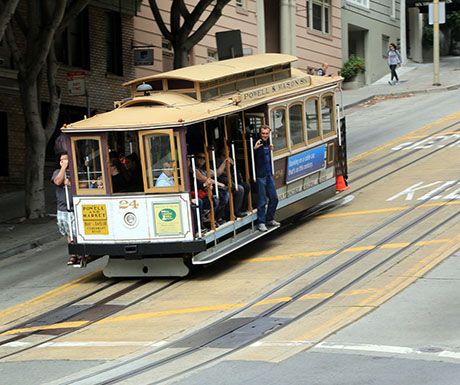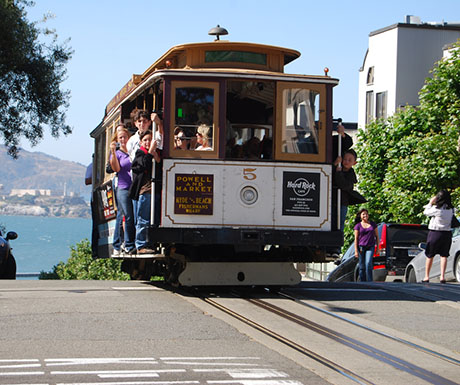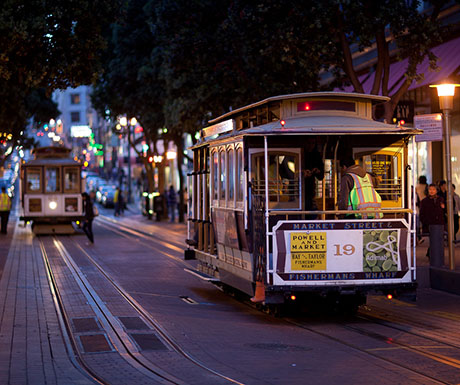San Francisco is a city hailed for its landmarks, from the Golden Gate Bridge to Alcatraz Island. However, there is one particular icon which has endured the test of time and today still attracts tourists in their hundreds: the cable car.The San Francisco cable car system is a true icon of the city, and is the last manually operated cable car system in the world. Although there are only three lines still in operation (out of an original twenty-three), the cable car is still a great way to see all of San Franciscos greatest sights. Two of the cable car routes take passengers downtown, to Union Square and Fishermans Wharf, two districts which are a hit with both locals and tourists.

Established in 1873, the first cable car was successfully operated in August, with regular service beginning in September. Soon after this more cable cars were added to the system, creating a popular and profitable means of transport. For the first time, locals were able to get about the city with complete ease, and the novelty of the cable cars promoted people to explore San Francisco in greater depth.

In 1892, the first electric streetcars were put into operation, and were considered superior to the original cable cars as they cost roughly half to manufacture and run. Any objections to the electric streetcars were soon forgotten as the 1906 San Francisco earthquake destroyed the building storing the 117 cable cars. By 1912, only eight cable car lines remained, and even those were reduced once buses came into use.
As modern technology evolved, the cable cars became more of a nuisance for the government, yet never declined in public fondness. In fact, during the 1940s, various petitions were held to keep the original cable cars in operation. Eventually it was agreed that the cable car would remain in operation, with only three routes remaining for it to traverse.

The cable cars ran in this fashion until the early 1980s, when engineers realised that the entire cable car system had become unsafe. It took a staggering two years for the entire system to be replaced, during which time sixty nine blocks worth of tracks and cables were dismantled and replaced. Many of the cable cars had to be repaired, ensuring that they were stable enough for operation once more. The cable car system reopened again in June 1984, just in time to enjoy the publicity that followed San Francisco hosting that years Democratic National Convention.
Since then, the cable cars have become a hit with tourists, and are considered one of the top attractions of San Francisco. The three routes in operation pass by some of the citys most popular areas, including Fishermans Wharf. Although considered unnecessary by some, the original cable cars have stood against the test of time, defying the odds, and becoming iconoclastic.
So if you are wondering how best to explore the city of San Francisco, look no further than the citys greatest form of transport: the cable car system.